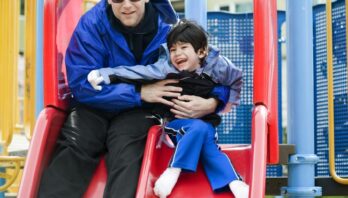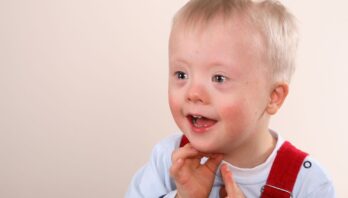 Children with disabilities may communicate their distress through behavior changes. These signs of abuse can be difficult to notice, because children’s behaviors change with every new stage of development. But significant changes in behavior that can’t be traced to something else in the child’s life, such as moving or loss, could be related to the impacts of abuse.
Children with disabilities may communicate their distress through behavior changes. These signs of abuse can be difficult to notice, because children’s behaviors change with every new stage of development. But significant changes in behavior that can’t be traced to something else in the child’s life, such as moving or loss, could be related to the impacts of abuse.
Indications of abuse or other traumatic events can include:
Changes in moods. Children may seem to be more frightened, anxious, upset, angry, depressed, or aggressive. They may become more withdrawn or, in some cases, more outgoing. Children who do not speak may get more destructive, angry, or easily upset. Younger children may have more temper tantrums or cry more. Children of all ages may be more destructive of toys or belongings. Some children may begin hurting themselves or show aggressive behaviors such as yelling, hitting, or throwing things.
Obedience. Some children may become more eager to please.
Fears. Children may become fearful of going to school, going home, being in the dark, riding the bus, or may begin to fear men or women, a certain person, or a place. They may stop wanting to be with someone who has been in their lives.
Changes in communication. Children or youth may withdraw or communicate less, while others may actually communicate more. Some children may communicate by drawing violent art.
Changes in functioning. The child’s ability to function day-to-day may change. Children or youth may:
- Eat less or eat more
- Suddenly lose or gain weight
- Sleep more, sleep less, have nightmares, have trouble going to sleep at night, be frightened of going to sleep, or fall asleep during the day. Sleep patterns may also revert to an earlier age.
- Stop taking care of themselves, such as neglecting to wash their hair or their bodies, or wearing the same clothes over and over
- Refuse to take baths or take too many baths. Often younger children who have experienced abuse become afraid of baths, and may cry or have tantrums at bath time.
- Report increased headaches or gastrointestinal distress
- Return to earlier developmental stages, such as sucking their thumbs, wetting the bed, being clingy to a parent or a caregiver
Changes in school and daycare behavior. Children may have difficulty concentrating in childcare settings or in class and become less cooperative. Babies, toddlers, and young children may stop engaging in play, or may not move around and explore as much, while older children may skip school.
Increased risk taking. Youth may begin to experiment with drugs, alcohol, sex, self-abusive behaviors, or may run away or take other unsafe risks.
Increase in sexual behaviors. Some children may begin suddenly acting out or drawing sexual pictures that are not appropriate for their age. Some children may be sexually aggressive with younger children. Children between the ages of 3-5 may become sexually inappropriate in a public setting or with their peers.
Physical Signs of Abuse
Physical signs of abuse can include injuries that the child or a care provider have difficulty explaining, including broken bones, burns, cuts, bruising, or missing teeth. Other physical signs of sexual abuse include pain from injuries, abrasions, or bleeding in the genital or rectal areas; blood in the sheets or underwear; yeast or bladder infections; and sexually transmitted diseases or pregnancy. Children may also begin having stomach aches, digestive distress, or frequent headaches.
(This section includes information from SAFE; The Mama Bear Effect; & Rape, Abuse & Incest National Network.)




